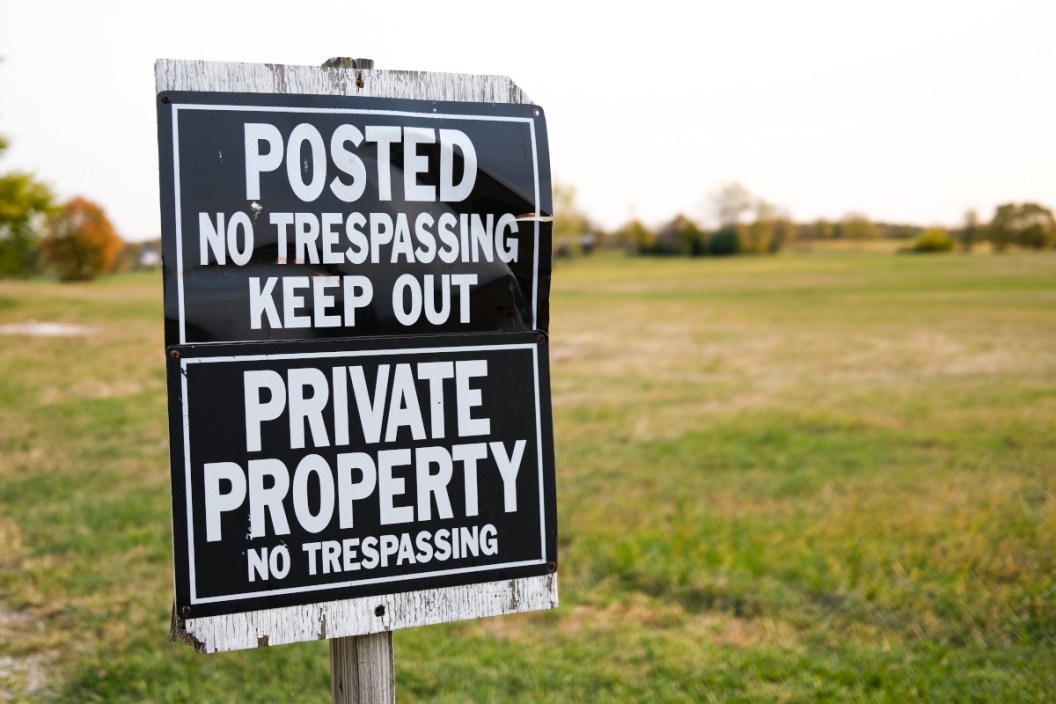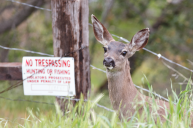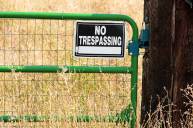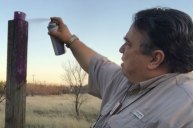If you've recently acquired a new piece of hunting land, odds are you're concerned about what to do about trespassers once the seasons finally arrive. It's a legitimate concern for any new landowner, especially if it's your dream piece of land in a big buck state. It gets frustrating to have someone blatantly enter your property after you've put tons of time and energy into habitat improvements, food plots, and stand placements. If someone walks in at the wrong time, they could potentially run out game animals and all your hard work will be for naught. That's why posting land against trespassers is so important. It may not ward everyone who decides to disrespect private property, but it will ward off the casual potential trespasser who decides to take their chances with a piece of unposted land. In the event of a dedicated trespasser entering your land, you will also want to be sure you can make a case with law enforcement. There are some states with trespassing laws where proper signage or markings must be place before you can file criminal trespassing charges of any kind. Today we'll discuss some of the best ways to post your land against trespassers, and the advantages and disadvantages of each.
Placing No Trespassing Signs

Getty Images: LisaChristanson
A simple no trespassing sign is still the easiest way to post private land. The simplest way to go about it is to walk the property lines and post them on trees at intervals. Check state laws to see what they say about spacing of the signs in your area, because it's going to differ from place to place. We recommend using screws over nails. Simply because the threads of a screw help hold it in place longer
One solid solution that requires a lot of extra work is to use a wood backing for your signs and then hang them like pictured above. When attaching any signs to live trees, do not forget that the tree is going to grow every year. The solution here is to keep the signs slightly loose on the tree so the sign has room to move around. If you place a sign taught, the tree might crack or rip the sign as it grows.
When it comes to sign type, metal or aluminum is usually best. You also usually get what you pay for with no trespassing and no hunting signs. The more you spend, the longer the signs will last in the field. Many metal signs have a special UV treatment to the paint that helps keep them from fading in the sun. While they're great on durability, they're horrible on affordability. If you're looking to post a few hundred acres with all metal signs, it's going to be expensive.
On the flip side, light polyethylene-style signs made of Tyvek or other lightweight materials can be bought in bulk for cheap. You can sometimes get as many as 100 for less than $30. The downside to these is they usually start fading quickly and many become unreadable in as little as a year or two depending on how much sunlight they are exposed to every day. That means frequent checks to make sure the lines are still clear.
Placing and maintaining signage is often more time consuming than many new property owners realize. Be prepared to invest a ton of time and energy into the work, even on smaller parcels. A good cordless drill will help make the work easier. Extra time and money will need to be budgeted to areas without fences or trees because they'll require setting posts to hold the signs.
When posting land, focus primarily on the places where private land borders public roads and the access points to your land. Many states also have regulations on the types of signs you'll need. Here in Michigan, the law requires a sign that's at least 50 square inches with letters that are at least one inch high. Many other states also require the name, address, and even phone number of the property owner. This task can be a ton of extra work if you're putting out a few hundred signs. Pay attention to distancing between signs too. For instance, New York's trespassing laws require signs be "no more than 660 feet apart."
Posting Your Land Using Purple Paint
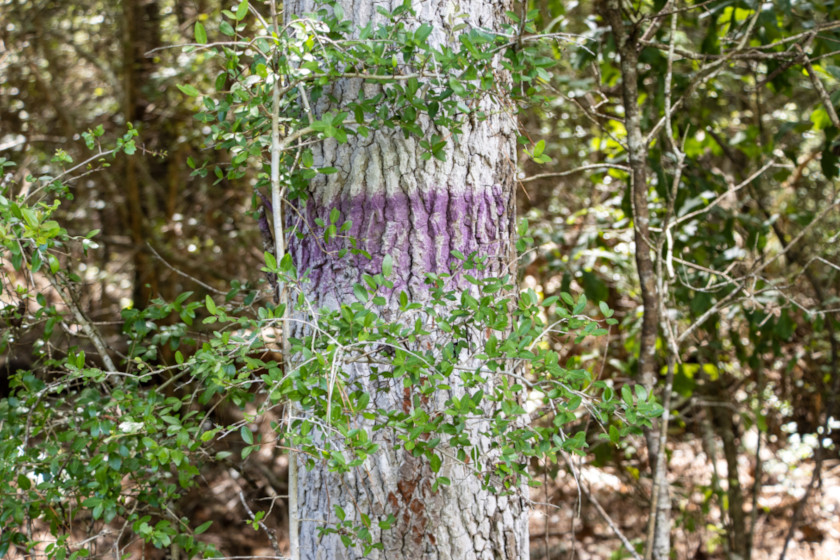
Getty Images: tim Bingham
One of the newer methods for marking your land off limits is the use of purple paint laws. Not every state has these, but they allow landowners to mark their borders using simple vertical lines of purple paint. Compared to the initial setup and maintenance required to post signs, purple paint is an easy way to say: "keep out." Many paint companies now sell specialty paints made for specifically this purpose. It's a little more expensive than a standard can, but it's also usually made to stand up the elements longer and resist fading.
The biggest downside to purple paint is that it is not law everywhere. These laws seem to be more common in the south in places like Texas, Alabama, Arizona, North, Carolina, South Carolina, and Tennessee. Although some states like Indiana and Pennsylvania have started using the concept too. The regional nature of this method of posting is another downside. The locals may know what your paint marks mean, but if someone from out of state is unfamiliar with such laws, they may not realize your land is posted. Ignorance of the law is no excuse, but we'd prefer they stay out of our real estate in the first place rather than spend time in court. If you have a lot of out-of-staters who travel to your area, your best option may be a combination of paint and signs.
Just like with signs, the law usually requires you to mark trees or posts in a specific way for the land to be considered posted. Texas requires "vertical lines of not less than eight inches in length and not less than one inch in width." Additionally, these lines cannot be less than three feet from the ground or greater than five feet high. Texas law also requires them to be no more than 100 feet apart in forested areas and 1,000 feet apart in other areas.
Other Deterrent Methods
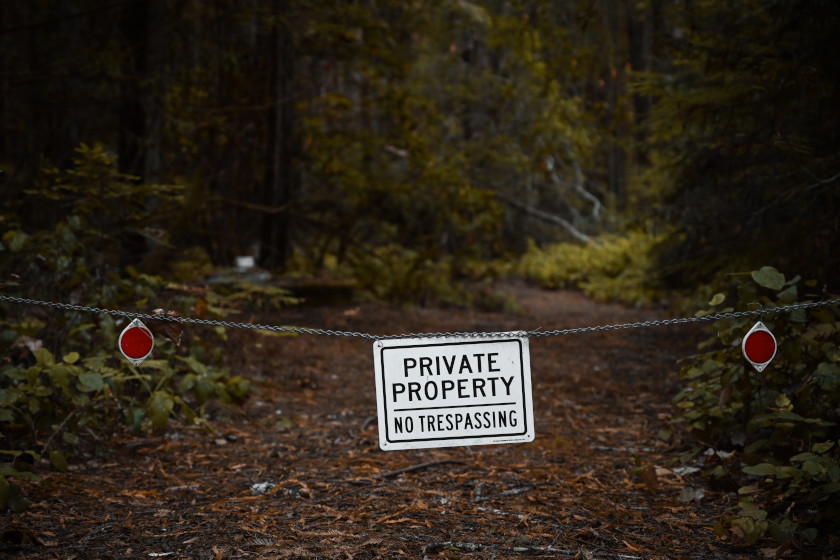
Getty Images: Hunter Souza
In addition to signs or paint, there are other things you can do to make your property less appealing to potential trespassers. Consider posting signs that say something about "video surveillance" being used. You don't even need to place a bunch of security or game cameras to do it. Just the idea they may be caught on camera is enough to usually make most casual trespassers think twice about what they are about to do. Phony security cameras are sold for cheap online if you want to complete the effect.
We also recommend being active on your property. Make an appearance there as often as possible. Patrol the property lines frequently. People will notice, and poachers will make a note to avoid your land as a place for their crimes. Finally, consider all the access points to your property. Close them off with gates or fences so vehicles cannot drive through them. You can also use vegetation and tree plantings to block off key areas of your property from view of the road. Consider keeping your treestand and blind placements out of view from the road. Large permanent blinds within a few hundred yards of the road can also cause problems. Visible stands and blinds can signal to poachers that this may be a good area to try. You also run a greater risk of them being stolen. We also recommend keeping your hunting activities low key on your land. One never knows just who's watching your social media. All it takes is one poacher accidentally viewing your trail camera to give them incentive to do something highly illegal. The quieter you are about what's walking your property and what you've shot there, the better.
For more outdoor content from Travis Smola, be sure to follow him on Twitter and Instagram For original videos, check out his Geocaching and Outdoors with Travis YouTube channels.
